List of Python Certification Exam Questions to Clear Programming Test

After you have finished the python exam successfully you will obtain the Python Programming Language certificate. This certificate would be valid for a period of 18 months.
The test timing is 65 minutes and there will be 40 questions in the test. The passing score is 70%. Finishing the test on time has become an important aspect of the managers. The python test and sample question papers have been made in a similar format.
You will all assigned a situation with precise needs and access to the network. A board comprising of professionals would decide if the candidate has cleared the test or not. For testing your practical experience, you might be asked for doing practical work of the language.
We have updated exam information for 2019
Exam Details: https://pythoninstitute.org/pcap-certification-associate/
Exam name: PCAP and PCPP
Exam level: Associate
Duration: 65 minutes + 10 minutes
No. of questions: 40
Passing score: 70%
Validated against: PCAP: Programming Essentials in Python (Cisco Networking Academy)
Format: Single choice and multiple choice
Full exam price: USD 295
Exam fee discounts 50%: USD 147.50, for test candidates who complete courses Programming Fundamental in Python (Part 1 & 2)
Exam fee discounts 51%: USD 144.55, for test candidates who complete course Programming Fundamental in Python through Cisco Networking Academy
Practice with 100 Python Certification Exam Questions Answers to Clear Programming Test
1. Draw a comparison between Java & Python
Parameters | Java | Python |
Ease of use | Good | Very good |
Coding speed | Average | Excellent |
Data type | Static | Dynamic |
Data science & machine learning application |
|
|
--------------------------------------------------------------------------------------------------------------------------------
2. What is Python?
Python is a high-level, general-purpose programming which is simple to interpret, highly interactive and object-oriented scripting language. Python source code is available under General purpose license (GNU). Python is easy to read and uses English keywords frequently. Python has very few syntactical constructions than other languages.
--------------------------------------------------------------------------------------------------------------------------------
3. Which command is used to exit help window or help command prompt?
You should type quit at the help’s command prompt. The help window will automatically get closed and the Python shell prompt will appear.
--------------------------------------------------------------------------------------------------------------------------------
4. Does the functions help() and dir() list the names of all the built-in functions and variables? If no, how would you list them?
The help() and dir() functions do not list all the names of built-in functions such as max(), min(), filter(), map(), etc. The help() and dir() are available as part of the standard module. To view these functions, you can run the module” builtins” as an argument to “dir()”. It will display the built-in functions, exceptions, and other objects as a list.
--------------------------------------------------------------------------------------------------------------------------------
5. How do Python check Compile-time and Run-time code?
Python performs most of the checks after the code execution. However, some amount of compile-time check is done before code execution. If a user-defined code is referenced by Python that does not exist, the code gets compiled successfully. In fact, the code will fail with an exception only when the code execution path references the function which does not exist.
--------------------------------------------------------------------------------------------------------------------------------
6. List the features of python
- Python supports functional programs, and structured programming methods as well as OOP.
- You can use Python as a scripting language or can be compiled to byte-code for building large applications.
- Python supports dynamic data types and supports dynamic type check.
- Python supports automatic garbage collection.
- You can integrate Python with C, C++, COM, ActiveX, CORBA, and Java very easily.
--------------------------------------------------------------------------------------------------------------------------------
7. Describe the function of PYTHONPATH
PYTHONPATH has a role similar to PATH. This is an environmental variable and informs the Python interpreter about the location of the module files to be imported into a program. Pythonpath includes the Python source library directory and the directories containing Python source code. Python installer sometimes presets the PYTHONPATH.
--------------------------------------------------------------------------------------------------------------------------------
8. Explain about Python"s parameter passing mechanism?
All the parameters pass “by reference” to the functions by default in Python. If the value of the parameter is changed within a function, the change gets reflected in the calling function. When you run the arguments to functions, you can observe the pass “by value” behavior. This is because of the immutable nature of them.
--------------------------------------------------------------------------------------------------------------------------------
9. Explain the features of Python"s Objects.
- The Python’s Objects are instances of classes. They are created at the time of instantiation. Eg: object-name = class-name(arguments)
- More than variable can reference the same object in Python
- Every object holds exceptional id and it can be obtained by using id() method.
- Every object can be either mutable or immutable depending on the type of data they hold.
- When an object is not being used in the code, the following instances can happen automatic destruction, collected as garbage or destruction.
- You can convert the content of the objects into string representation using a method
--------------------------------------------------------------------------------------------------------------------------------
10. What is the purpose of PYTHONSTARTUP?
PYTHONSTARTUP is an environmental variable. You can specify the location of the file path to a Python file with source code. Every time you run the interpreter, PYTHONSTARTUP gets executed. It is named as .pythonrc.py in Unix. PYTHONSTARTUP contains commands that load utilities or modify PYTHONPATH.
--------------------------------------------------------------------------------------------------------------------------------
11. What is the purpose of PYTHONCASEOK?
PYTHONCASEOK is used in Windows to instruct Python to find the first case-insensitive match in an import statement. You can set this variable to any value to activate it.
12. What is the purpose of PYTHONHOME?
The location at runtime is defined by PYTHONHOME. This is an alternative module search path. This module points to the standard library by default. You can switch between module libraries easily.
13. What is Web Scraping? How do you achieve it in Python?
Web Scrapping is a process of extracting huge data available on websites and storing it in local machines or in the database.
Process:
- Load the web page using requests module.
- Paste the HTML from the web page to get the interesting information.
Python uses few modules for scraping the web. They are urllib2, scrapy, pyquery, BeautifulSoap, etc.
14. What is a Python module?
A Python module is a script that contains import statements, functions, classes, variable definitions, and Python runnable code. This module has a file with an extension ‘.py’. Modules can also be zip files and DLL files.
The module name can be referred as a string that is stored in the global variable name.
A module can be imported by other modules by import or from module-name import
--------------------------------------------------------------------------------------------------------------------------------
15. Name the File-related modules in Python?
Python provides libraries/modules with functions help you to manipulate text files and binary files on file system. With the help of these modules, you can create files, update their content, copy, and delete files. The libraries are os, os.path, and shutil.
- The os and os.path modules include functions for accessing the filesystem
- Shutil – module helps you to copy and delete the files.
--------------------------------------------------------------------------------------------------------------------------------
16. What kind of data types are supported by Python?
Python supports five data types:
- Numbers
- String
- List
- Tuple
- Dictionary
--------------------------------------------------------------------------------------------------------------------------------
17. Explain the use of with statement?
A “With” statement is often used to open a file, process the data present in the file, and to close the file without calling a close () method. Python makes exception handling simple with “with” statement and provides cleanup activities.
--------------------------------------------------------------------------------------------------------------------------------
18. Explain all the file processing modes supported by Python?
You can open Python files in one of the three modes. They are:
read-only mode, write-only mode, read-write mode, and append mode by specifying the flags “r”, “w”, “rw”, “a” respectively.
--------------------------------------------------------------------------------------------------------------------------------
19. Explain how to redirect the output of a python script from standout (ie., monitor) on to a file?
There are two possible ways of redirecting the output from standout to a file.
1. You can open an output file in “write” mode. Print the contents into that file, using sys.stdout attribute.
Import sys
Filename = “outputfile” sys.stdout = open () print “testing”
2. You can create a python script say .py file with the contents, say print “testing” and then redirect it to the output file while executing it at the command prompt.
Eg: redirect_output.py has the following code:
Print “Testing”
Execution: python redirect_output.py > outputfile.
--------------------------------------------------------------------------------------------------------------------------------
20. What is the shortest way to open a text file and display its contents?
The shortest way to open a text file is by using “with” command.
This is done as shown:
With open ("file-name", "r") as fp:
fileData = fp.read()
#to print the contents of the file print (fileData)
-------------------------------------------------------------------------------------------------------------------------------
21. How do you create a dictionary which can preserve the order of pairs?
Python dictionaries contain <key, value> pairs and this order should be preserved. They do not preserve the insertion order of <key, value> pairs.
Python 2.7. Introduced a new “OrderDict” class in the “collections” module”. This “OrderDict” provides the same interface like the general dictionaries. It navigates through keys and values in an ordered manner depending on when a key was first inserted.
------------------------------------------------------------------------------------------------------------------------------
22. When is a dictionary used instead of a list?
Dictionaries are the best option when the data is labeled, i.e., a record with field names.
Lists are a better option to store collections of un-labeled data like all the files and subdirectories in a folder.
A Search operation on dictionary object is faster than searching a list object.
--------------------------------------------------------------------------------------------------------------------------------
23. What is the use of enumerate() in Python?
You can iterate through the sequence and retrieve the index position and its corresponding value at the same time using the enumerate() function
--------------------------------------------------------------------------------------------------------------------------------
24. What are the different kinds of sequences supported by Python? What are they?
Python supports 7 sequence types. They are str, list, tuple, unicode, bytearray, xrange, and buffer.
--------------------------------------------------------------------------------------------------------------------------------
25. Explain how to perform pattern matching in Python?
You can specify Regular Expressions/REs/ regexes that can match specific “parts” of a given string. The Python’s “re” module provides regular expression patterns and got introduced from later versions of Python 2.5. “re” module provides methods for search patterns for text strings and pattern which are both Unicode strings and 8-bit strings. The re-expression can contain both text characters and regular characters.
--------------------------------------------------------------------------------------------------------------------------------
26. List the methods for matching and searching the occurrences of a pattern in a given text String.
The four methods to perform pattern matching in “re”:
Match() – matches the regular expression pattern only to the beginning of the String and not to the beginning of each line.
Search() – scans the string and look for a location where the regular expression pattern matches.
Findall() – finds all the occurrences of the match and return them as a list.
Finditer() – finds all the occurrences of the match and return them as an iterator.
--------------------------------------------------------------------------------------------------------------------------------
27. Explain split(), sub(), subn() methods to modify strings.
To modify the strings, Python’s “re” module provides 3 methods. They are:
split() – uses a regex pattern to “split” a given string into a list.
sub() – locates all substrings where the regex pattern matches and then different string is replaced.
subn() – This method is similar to a sub() and it returns the new string along with the no. of replacements.
--------------------------------------------------------------------------------------------------------------------------------
28. How do you display the contents of the text file in reverse order in Python?
1. Convert the given file into a list.
2. Reverse the list by using reverse ()
------------------------------------------------------------------------------------------------------------------------------
29. What is JSON? How to convert JSON data into Python data?
JSON – stands for JavaScript Object Notation. It is a common data format for storing data in NoSQL databases. JSON is built on 2 structures:
1. A collection of <name, value> pairs.
2. An ordered list of values.
As Python supports JSON parsers, JSON-based data is actually represented as a dictionary in Python. You can convert JSON data into python using load() of JSON module.
--------------------------------------------------------------------------------------------------------------------------------
30. Name few Python modules for Statistical, Numerical and scientific calculations.
numPy – provides an array/matrix type computation. It is useful for doing computations on arrays.
scipy – provides methods for doing numeric integrals, solving differential equations
etc pylab – is a module for generating and saving plots
matplotlib – used for managing data and generating plots.
--------------------------------------------------------------------------------------------------------------------------------
31. What is TkInter?
TkInter is Python library. It is a toolkit to support various GUI tools or widgets for GUI development. The common attributes of them include Dimensions, Colors, Fonts, Cursors, etc.
--------------------------------------------------------------------------------------------------------------------------------
32. What are the methods are used in the construction and initialization of custom Objects?
Python uses three methods in the construction and initialization of custom Objects. They are init, new, and del.
new – this method can be considered as a “constructor”.
init — It is an “initializer”/ “constructor” method. It is invoked whenever any arguments are passed at the time of creating an object.
del- this method is a “destructor” of the class. Whenever an object is deleted,
invocation of del__ takes place and it defines behavior during the garbage collection.
--------------------------------------------------------------------------------------------------------------------------------
33. Is Python object-oriented? What is object-oriented programming?
Yes. Python is Object Oriented Programming language. OOP is the programming is based on classes and instances of those classes called objects. The features of OOP are:
Encapsulation, Data Abstraction, Inheritance, Polymorphism.
--------------------------------------------------------------------------------------------------------------------------------
34. What is a Class? How do you create it in Python?
A class is a blueprint/ template of code /collection of objects that has the same set of attributes and behavior. You can create a class using the keyword class followed by class name beginning with an uppercase letter.
--------------------------------------------------------------------------------------------------------------------------------
35. What is Exception Handling? How do you achieve it in Python?
In Python, an exception is an error that may incur while executing a program. In such a situation, Python generates exception handling, which prevents a program from crashing. Exceptions are special conditions in a program. You can use exception handling when there is a code throwing an error. You can raise an exception by using raise exception statement.
Some keywords useful for exception handling are:
try – A try clause can have many except clauses to handle exceptions to handle differently in different situations. However, it will execute the only one when the exception occurs.
else - The else clause is used to execute a code, when there is no exception raised. It is appropriate to use the else clause than adding code to try clause. The else clause avoids unintentional catching of code.
except – An except clause catches all errors or catches a specific error. It is used after the try block. You can handle multiple exceptions using “except” clause. These exceptions are passed to the clause as “tuple”
print(“incompatible operand types to perform sum”)
raise – The raise clause allows the programmer to force an error to occur
finally – The final clause is executed when an exception occurs no matter what happens. This clause is used to release external sources.
--------------------------------------------------------------------------------------------------------------------------------
36. Explain Inheritance in Python with an example.
Inheritance is a powerful feature in OOPS and in Python. This feature defines a new class with or without any modification to an existing class. The defined class is called new class or derived class or child class and the one from which it inherits is called base or parent class or superclass. Inheritance gives a code reusability and makes a creation and maintenance of an application easy.
The different types of inheritance supported by the Python are:
Single, multi-level, hierarchical and multiple inheritances.
Single Inheritance –This is a situation where a derived class acquires the members of a single superclass.
Multi-level inheritance – a derived class d1 in inherited from base class base1, and d2 are inherited from base2.
Hierarchical inheritance – You can inherit any number of child classes from one base class.
Multiple inheritances – a derived class is inherited from more than one base class.
--------------------------------------------------------------------------------------------------------------------------------
37. What is a thread? What is a multithread?
Threading feature is provided by an operating system. Threading is lighter than processes and shares the same memory space. Threading is a very popular approach to attain concurrency and parallelism. A thread has a beginning, an execution sequence, and a conclusion.
Multi-threading share the same data space within the same process. They can share data, communicate effectively, then when they were a separate process.
--------------------------------------------------------------------------------------------------------------------------------
38. What are the common exceptions in Python?
The common exceptions in Python are:
- IOError: This error happens if the file cannot be opened.
- ImportError: This error happens when python cannot find the module
- ValueError: This error occurs when a built-in operation or function receives an argument that has the correct type but a wrong value
- KeyboardInterrupt: This error occurs if you stop the CPython program by using the interrupt key (normally Control-C or Delete). The Python interpreter immediately throws up KeyboardInterrupt error.
- EOFError: The end of file statement error occurs when one of the built-in functions (input() or raw_input()) hits an end-of-file condition (EOF) without reading any data. This means that there was open parenthesis on a line which is not matching closing parenthesis. Hence the EOF error.
--------------------------------------------------------------------------------------------------------------------------------
39. Explain about the Overriding method in Python.
The ability of a class to change the implementation of a method provided by one of its ancestors is overriding. This feature is very important in Object-oriented programming like Python as it makes inheritance to get exploited to the fullest potential. Overriding may copy a class without duplicating the code. This feature enhances or customizes a part of the code. Overriding is certainly an integral part of the inheritance. Inheritance is a very powerful method in OOP. It works through implicit delegation.
--------------------------------------------------------------------------------------------------------------------------------
40. Which methods of Python are used to determine the type of instance and inheritance?
There are two built-in functions that work with inheritance in Python.
1. isinstance() – this method checks the type of instance.
2. issubclass() – this method checks class inheritance
Issubclass(unicode, str) – returns False because “unicode” is not a subclass of “str”.
--------------------------------------------------------------------------------------------------------------------------------
41. What are the two built-in functions which come on the keyboard by default to read a line of text from standard input?
The built-in functions to read a line of text from standard input, which comes from the keyboard by default are:
Raw_input and input
--------------------------------------------------------------------------------------------------------------------------------
42. How is Python executed?
The files in Python are compiled in bytecode and then executed by the host. Alternatively, type python.pv at the command line.
--------------------------------------------------------------------------------------------------------------------------------
43. What is namespace in Python? What are local and global namespaces?
In Python, every name introduces has a place where resides can be found. This space is known as a namespace. The namespace is an address location, where variable name and object are mapped. When you search a variable, the address location also gets searched, to get a corresponding object.
Local namespaces are created within a function when that function is called.
When a program starts, then global namespaces are created.
--------------------------------------------------------------------------------------------------------------------------------
44. How to find undefined g++ symbols __builtin_new or __pure_virtual?
You can load g++ extension modules dynamically. You have to:
- Recompile and re-link using g++ in Python(change LINKCC in the python Modules Makefile)
- Link the extension module using g++
-----------------------------------------------------------------------------------------------------------------------------
45. Differentiate between .py and .pyc files?
In Python, both .py and .pyc files hold the bytecode. .py files are Python source files. .pyc are the compiled bytecode files, generated by Python compiler.
--------------------------------------------------------------------------------------------------------------------------------
46. Explain how to retrieve data from a table in MySQL database through Python code?
1. Import MySQLdb module as import MySQLdb
2. Establish a connection to the database as follows:
db = MySQLdb.connect(“host”=”localhost”, “database-user”=”user-name”, “password”=”password”, “database-name”=”database”)
3. Initialize the cursor variable upon the established connection: c1 = db.cursor()
4. Retrieve the information by defining a required query string. s = “Select * from dept”
5. Fetch the data using fetch() methods and print it. data = c1.fetch(s)
6. Close the database connection. db.close()
----------------------------------------------------------------------------------------------------------------------------
47. What are ODBC and Python?
ODBC (“Open Database Connectivity) API standard allows the connections with any database that supports the interface, such as PostgreSQL database or Microsoft Access in a transparent manner. There are 3 ODBC modules for Python:
1. PythonWin ODBC module – limited development
2. mxODBC – a commercial product
3.pyodbc– it is an open source Python package.
--------------------------------------------------------------------------------------------------------------------------
48. Define the function to randomize the items of a list in-place?
Python has a built-in module called . This module exports a public method <shuffle()> which can randomize any input sequence.
import randomlist = [2, 18, 8, 4]print “Prior Shuffling – 0”, listrandom.shuffle(list)print “After Shuffling – 1”, listrandom.shuffle(list)print “After Shuffling – 2”, list
--------------------------------------------------------------------------------------------------------------------------------
49. Mention how to remove duplicates from a list?
a. sort the list
b. scan the list from the end.
c. delete all the duplicate elements from the list when you scan from right-to-left,
--------------------------------------------------------------------------------------------------------------------------------
50. Differentiate between append() and extend() methods. ?
append() and extend() are list methods. Both append() and extend() methods add the elements at the end of the list.
append(element) – This list method adds the given element at the end of the list.
extend(another-list) – adds the elements of another list at the end of the list which is called the extend method.
--------------------------------------------------------------------------------------------------------------------------------
51. Name few Python Web Frameworks for developing web applications?
There are various web frameworks provided by Python. They are:
web2py – This is the simplest of all the web frameworks used for developing web applications.
cherryPy – This is an Object-oriented Web framework in Python.
Flask – This is a micro-framework for designing and developing web applications in Python.
--------------------------------------------------------------------------------------------------------------------------------
52. How do you check the file existence and their types in Python?
os.path.exists() – This method is used to check the existence of a file. Python returns True if the file exists, otherwise false
os.path.isfile() – This method is used to check if the given path references a file or not. Python returns True if the path references to a file, else it returns false.
os.path.isdir() – This method is used to check whether the given path references a directory or not. It returns True if the path references to a directory, else it returns false.
os.path.getsize() – returns the size of the given file
os.path.getmtime() – returns the time of the given path when last accessed. The value returned is a number.
--------------------------------------------------------------------------------------------------------------------------------
53. Mention a few methods that are helpful in the implementation of Functionally Oriented Programming in Python?
Some methods supported by Python (called iterators in Python3), such as filter (), map(), and reduce(), are very useful when you need to repeat over the items in a list, create a dictionary, or extract a subset of a list.
Filter () – helps you to extract a subset of values based on conditional logic.
map() – it is a built-in function that applies the function to each item in an iterable.
reduce() – iterates a pair-wise reduction on a sequence for single value computation.
--------------------------------------------------------------------------------------------------------------------------------
54. What is Python dictionary?
Python"s dictionaries map unique keys to values. They are associative arrays or hashes. Dictionaries are mutable. This means they are changeable. A dictionary key can be any Python type but are usually numbers or strings, Values, integers, tuples, any arbitrary Python object.
--------------------------------------------------------------------------------------------------------------------------------
55. How do you retrieve values from the dictionary?
You can get all the values from dictionary object using a dictionary.values() function.
--------------------------------------------------------------------------------------------------------------------------------
56. How to get keys from the dictionary?
You can get all the keys from dictionary object using a dictionary.keys() function.
--------------------------------------------------------------------------------------------------------------------------------
57. What are the various numeric types in Python?
Python has four different numeric types.
- int (plain integers): Integers are standard positive or negative whole numbers.
- long (long integers): long integers are of infinite size. They are just like plain integers followed by the letter "L" (ex: 150L).
- float (floating point real values): floats represent real numbers. They are written with decimal points to divide the whole number into fractional parts.
- complex (complex numbers): Complex is represented by the formula a + bJ, where a and b are floats, and J is the square root of -1 (the result of which is an imaginary number). Complex numbers are very rarely used in Python.
--------------------------------------------------------------------------------------------------------------------------------
58. What are tuples?
A sequence of immutable Python objects is known as tuples. Tuples are just like lists except that tuples cannot be changed and they use parentheses. A tuple can be created by using different comma separated values.
--------------------------------------------------------------------------------------------------------------------------------
59. Difference between tuple and list.
The list is mutable and the tuple is immutable. In a tuple, a fixed memory is assigned to the variable. In a list, more memory is used than actually used. The List is enclosed in brackets, a tuple is enclosed in parentheses.
--------------------------------------------------------------------------------------------------------------------------------
60. How to get the length of a list?
The length of the list is denoted by len (list).
--------------------------------------------------------------------------------------------------------------------------------
61. How to get the max value of the list?
Max(list) function returns the item from the list with max value.
--------------------------------------------------------------------------------------------------------------------------------
62. How to get min value of the list?
Min(list) function returns the item from the list with a min value.
--------------------------------------------------------------------------------------------------------------------------------
63. How to get the index of an object in a list?
list.index(obj) function returns the lowest index in the list where the object appears.
--------------------------------------------------------------------------------------------------------------------------------
64. When do you use a continue statement in a for loop?
A continue statement in a for loop is used, when the processing for a particular item is completed to move on to the next. The continue statement states, that the current item’s processing is done and ready to move on to the next item.
--------------------------------------------------------------------------------------------------------------------------------
65. When is a break statement used in a for loop?
The break statement gives you an indication that the function of the loop is completed and you should move to the next block of code. For example, when the item being searched is found, there is no need to keep looping. The break statement plays its role here and the loop terminates. The execution moves on to the next section of the code.
--------------------------------------------------------------------------------------------------------------------------------
66. What is PEP8?
PEP 8 is a coding convention which helps to make Python code more readable.
--------------------------------------------------------------------------------------------------------------------------------
67. How is Python language interpreted?
Python is an interpreted language. This language runs directly from source code. The programmer writes the source code which gets converted into intermediate language, which is translated into machine language which is executed.
--------------------------------------------------------------------------------------------------------------------------------
68. Name the tools that identify the bugs and perform static analysis.
Pychecker is a static analysis tool. This tool detects bugs from Python source code. It also cautions about style and complexity of the bug.
Pylint tool verifies whether the module meets the coding standard.
--------------------------------------------------------------------------------------------------------------------------------
69. Explain about Python decorators?
A Python decorator is a specific change made in the Python syntax to alter functions easily.
--------------------------------------------------------------------------------------------------------------------------------
70. What is lambda is Python?
A lambda is a tool for creating a single expression, one-time, small anonymous function objects I Python. A lambda makes new function object and returns at runtime. It can have any number of arguments. Lambda functions re used in combination with filter(), map(), and reduce() functions.
--------------------------------------------------------------------------------------------------------------------------------
71. What is slicing?
Slicing is a selection of a range of items from sequence types like list, tuple, strings etc.
--------------------------------------------------------------------------------------------------------------------------------
72. What are iterators?
Iterators are used to iterate a group of elements, containers etc.
--------------------------------------------------------------------------------------------------------------------------------
73. What is unit test?
In Python, a unit testing framework is known as unit test.
--------------------------------------------------------------------------------------------------------------------------------
74. What are generators?
The method of implementing iterators is known as generators. It is a normal function yielding expression in the function.
--------------------------------------------------------------------------------------------------------------------------------
75. What is docstring?
A python documentation string is called docstring. Docstring documents python functions, modules, and classes.
--------------------------------------------------------------------------------------------------------------------------------
76. How to copy an object?
You can use copy.copy () or copy.deepcopy() for the general case. You can copy most of the objects but not all of them.
--------------------------------------------------------------------------------------------------------------------------------
77. Mention the difference between X-Range and Range.
Xrange returns the xrange object. A range returns the list, and uses the same memory and no matter what the range size is.
--------------------------------------------------------------------------------------------------------------------------------
78. What is a module and package in Python?
A module is a way to structure program. Each Python program file is a module, which imports other modules like objects and attributes. A module is a Python file with .py extension. A package is a namespace which can have modules or subfolders. A package is a simple directory.
--------------------------------------------------------------------------------------------------------------------------------
79. How can a python script be executed on Unix?
The steps to execute a python script on Unix are:
- Script file’s mode must be executable
- The first line must begin with # ( #!/usr/local/bin/python)
-------------------------------------------------------------------------------------------------------------------------------
80. How can you access a module written in Python from C
Follow this step:
Module = =PyImport_ImportModule(“”);
--------------------------------------------------------------------------------------------------------------------------------
81. How to delete a file in Python?
Use the command os.remove (filename) or os.unlink(filename) to delete a file.
--------------------------------------------------------------------------------------------------------------------------------
82. How to generate random numbers in python?
To generate random numbers, you have to import command:
import random
random.random()
This command will return random floating point number in the range (0,1)
--------------------------------------------------------------------------------------------------------------------------------
83. What is the use of a //operator in Python?
A // operator is a floor division operator, used for dividing two operands. The quotient shows only digits before the decimal points.
For example: 10//5=2 and 10.0//5.0=2.0
--------------------------------------------------------------------------------------------------------------------------------
84. What is the use of a split function in Python?
A split function breaks a string into shorter strings using a defined separator. It gives a list of all words present in the string.
--------------------------------------------------------------------------------------------------------------------------------
85. What is a flask and what are its benefits?
A flask is a web microframework and will have no dependencies on external libraries. It makes the framework light with less dependency to update and lowered security bugs.
--------------------------------------------------------------------------------------------------------------------------------
86. How to minimize the Memcached server outages in your Python Development?
In case of an instance failure, several other instances also go down. Whenever the client makes a request, there will be a load on the database server. To avoid this, you should write a code to minimize cache stampedes. Then, there will be a minimal impact
You can bring up an instance of Memcached on a new machine, by using the lost machines IP address.
To minimize the server outages, the code is another wise option. It gives you the flexibility to change the Memcached server list with less effort.
--------------------------------------------------------------------------------------------------------------------------------
87. How should Memcached not be used in Python project?
- Memcached should be used as a cache, not as a data store.
- Use multiple sources for data availability. Never use Memcached as the only source to run your application.
- Memcached does not provide any security for encryption or authentication.
- Memcached is a key or value store. It cannot perform any query over data or over the content to extract information.
88. What is a dogpile effect? How to prevent?
Whenever the cache expires, the websites are hit by multiple client requests at the same time. You can prevent this effect using semaphone lock. When a value expires, the first process acquires the lock and generates new value.
--------------------------------------------------------------------------------------------------------------------------------
89. Identify the common way for the flask script to work?
The common ways identified are:
- It should be the import path for your application
- The path to a python file
--------------------------------------------------------------------------------------------------------------------------------
90. What is pass in python?
An operation in Python statement is a “pass”. In other words, it’s a placeholder in a compound statement where nothing is written. Just a blank is left.
--------------------------------------------------------------------------------------------------------------------------------
91. How to manage memory in Python?
Python memory is managed by Python private heap space. All the python objects and data structures are located in heap space. The interpreter handles private heap space and the programmer does not have access.
The Python memory manager allocated python heap space for objects. The programmer gets access to some tools for coding with the help of the core API.
All the unused memory gets recycled in in-built garbage collector of Python. This unused memory is available for heap space.
--------------------------------------------------------------------------------------------------------------------------------
92. What is pickling and unpickling?
They python pickle module is a process where any object is converted into a byte stream. Later dumps into a file using dump function. This process is termed as pickling.
Unpickling is when the byte stream is converted back into objects, The process of retrieving the original python objects from stored string representation is called unpickling.
The other names for pickling and unpickling are serialization, marshalling, or flattening. The pickling process is done to save the objects in a disc.
--------------------------------------------------------------------------------------------------------------------------------
93. How many arguments pass by value or reference?
Python has everything in object form. All the variables hold references to the objects. The reference values are according to functions, hence the value of the reference cannot be changed. You can change the objects if it is mutable.
--------------------------------------------------------------------------------------------------------------------------------
94. What are dict or list comprehensions?
Dict and list comprehensions are syntax constructions to simplify the creation of dictionary.
--------------------------------------------------------------------------------------------------------------------------------
95. What built-in-type python provides?
Python builds mutable and immutable built-in-types
Mutable:
- List
- Sets
- Dictionary
Immutable built-in types
- Strings
- Tuples
- Numbers
---------------------------------------------------------------------------------------------------------------------------
96. What is a negative index in Python?
The python arrays and list items are accessed with positive or negative numbers. These numbers are called index.
For a negative index, -n is the first index. –(n-1) is the second one. The last negative index is -1. All the elements are assessed by a negative index from the end of the list by backward counting.
---------------------------------------------------------------------------------------------------------------------------
97. How do you track different versions of your code?
Version control is the best way to keep track of your code.
---------------------------------------------------------------------------------------------------------------------------
98. What is monkey patching?
Changing the behavior pattern of function or object after being defined is known as monkey patching.
---------------------------------------------------------------------------------------------------------------------------
99. What does *args and **kwargs mean?
If we are not sure how many arguments will be passed to a function or pass stored list or tuple of arguments, then we use the function*args.
**kwarg is used when we are not sure how many keyword arguments will be passed to a function.
--------------------------------------------------------------------------------------------------------------------------------
100. What are @classmethod, @staticmethod, @property?
All the three are decorators. A decorator is a function that takes a function and returns a function or takes a class and returns a class.
--------------------------------------------------------------------------------------------------------------------------------
101. Explain garbage collection process
A count of the number of references to a given object is maintained. If a reference count goes down to zero, then the object does not exist anymore and the memory gets freed up. The garbage collector looks for “reference cycles” occasionally. It cleans up objects if they are not referenced, as they should not be live. As and when the objects are created, they are assigned to generations. Each object gets one generation. The younger object is dealt first.
Find a course provider to learn Python
Java training | J2EE training | J2EE Jboss training | Apache JMeter trainingTake the next step towards your professional goals in Python
Don't hesitate to talk with our course advisor right now
Receive a call
Contact NowMake a call
+1-732-338-7323Take our FREE Skill Assessment Test to discover your strengths and earn a certificate upon completion.
Enroll for the next batch
Python Programming Hands-on Training with Job Placement
- Dec 15 2025
- Online
Python Programming Hands-on Training with Job Placement
- Dec 16 2025
- Online
Python Programming Hands-on Training with Job Placement
- Dec 17 2025
- Online
Python Programming Hands-on Training with Job Placement
- Dec 18 2025
- Online
Python Programming Hands-on Training with Job Placement
- Dec 19 2025
- Online
Related blogs on Python to learn more
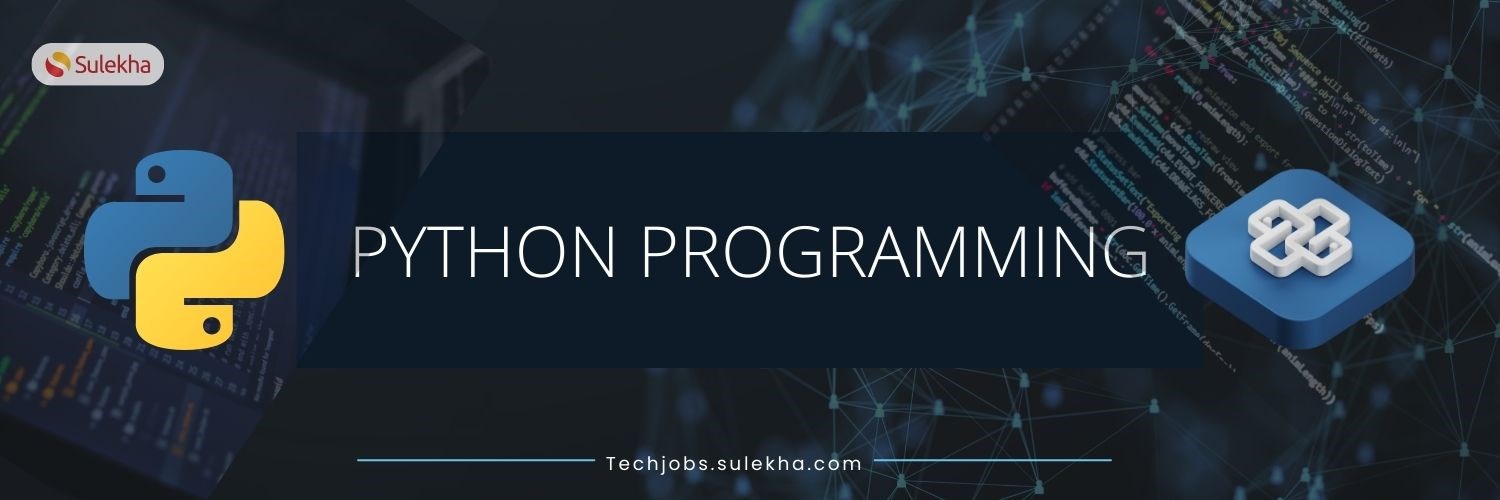
PYTHON PROGRAMMING
Discover Python, a versatile programming language ideal for web development, data analysis, and machine learning. Learn its easy syntax and extensive libraries to unlock a world of career opportunities in tech.

Python: The Language of Innovation and Versatility
"Master Python with Sulekha Tech Courses and boost your tech career. Find expert-led training in the USA and Canada for roles like Data Scientist and Machine Learning Engineer, and start your journey to innovation today."
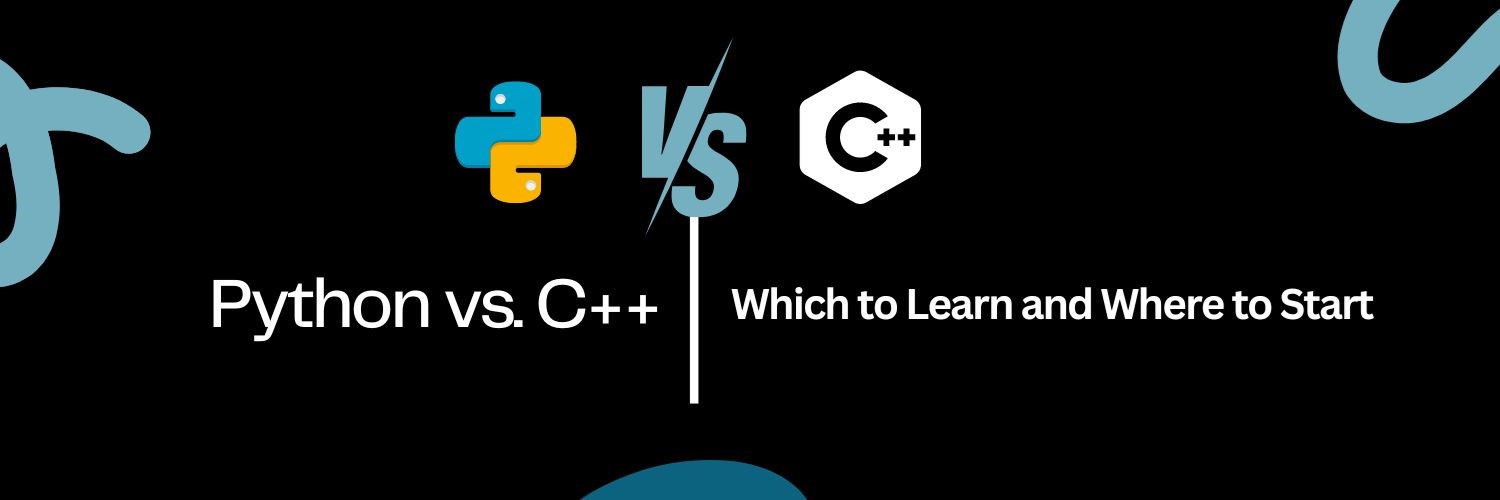
Python vs. C++: Which to Learn and Where to Start
Compare Python and C++ programming languages, learn which language is best for your needs and where to start your programming journey, with tips on getting started and resources for further learning.

Top 8 DevOps Programming Languages That You Must Know
Top 8 DevOps programming languages that every DevOps engineer should know. From Python to PHP, learn the essential skills for automating and streamlining software delivery."

How did I successfully complete Python course?
Embark on a journey of student’s success story in Python programming, uncovering stories of resilience, growth, and achievement. Be inspired by their transformative experiences, unwavering dedication, and remarkable successes in mastering Python and
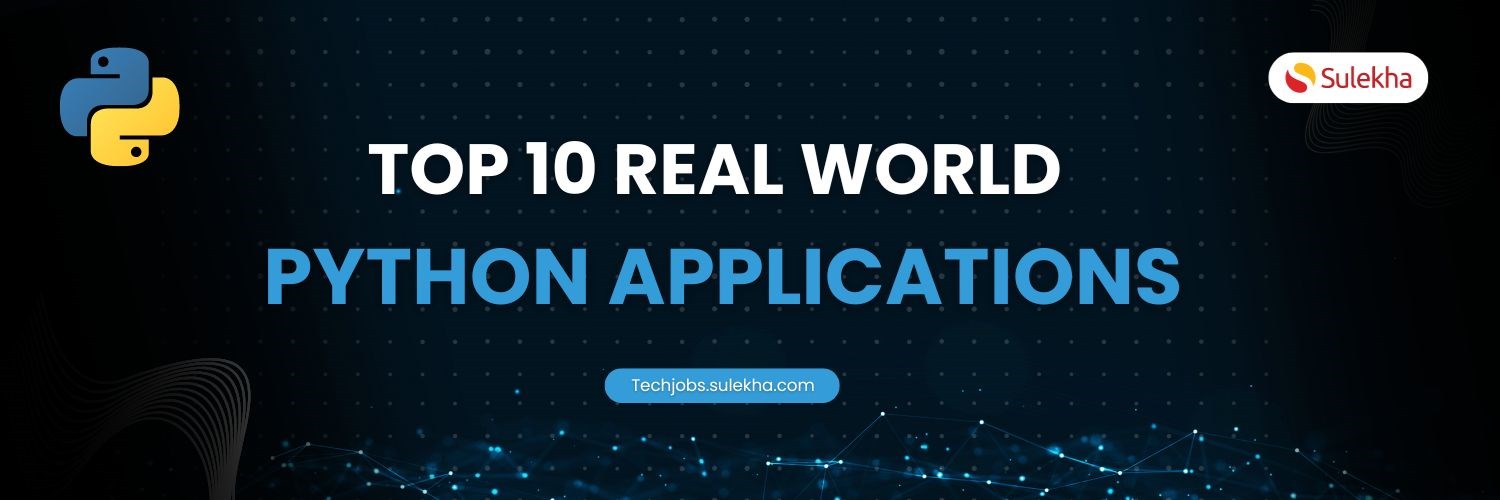
What are the top 10 Python Applications in the Real World?
Discover the top 10 Python applications transforming the real world across web development, audio and video Applications, business applications data science, game development, and more.

Ruby vs. Python: Pros, Cons, and Where to Start
Ruby vs. Python: Pros, Cons, and Where to Start Learning a programming language is helpful as it opens up numerous career prospects in the ever-growing technology field. Whether it is software development, web development, data science, or artificia
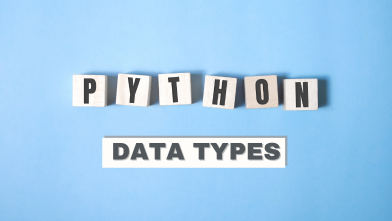
Data Types in Python for Data Science Applications
Python is a multipurpose programming language that finds applications across various domains. Its simplicity and flexibility make it a popular choice for web development, where frameworks like Django and Flask enable the creation of dynamic websites.
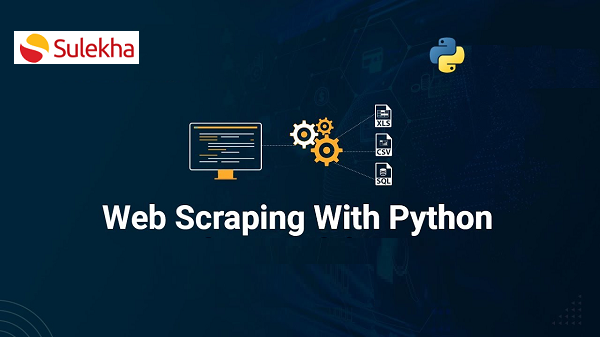
How to Build a Data Web Scraper Tool with Python
Web scraping involves processes to extract data from websites. This process is often performed using software that can simulate a user's actions on a website.
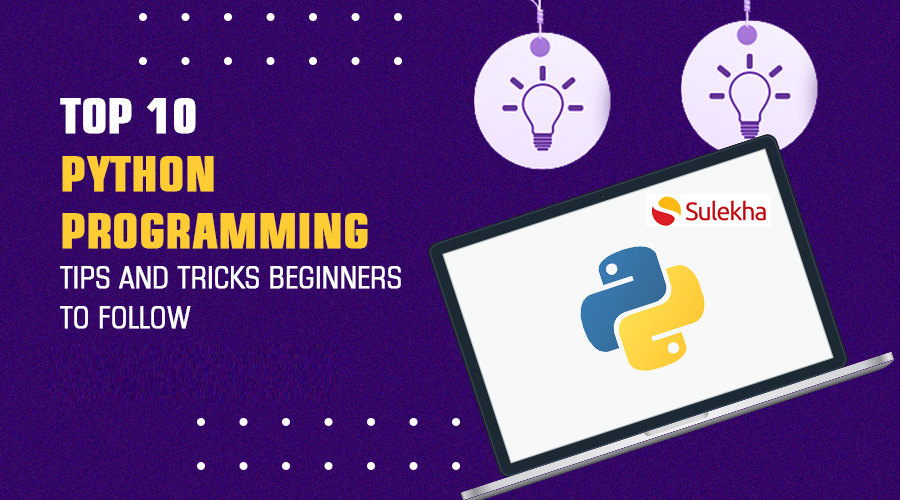
10 Python Tips and Tricks for Efficient Coding
Introduction
Latest blogs on technology to explore

From Student to AI Pro: What Does Prompt Engineering Entail and How Do You Start?
Explore the growing field of prompt engineering, a vital skill for AI enthusiasts. Learn how to craft optimized prompts for tools like ChatGPT and Gemini, and discover the career opportunities and skills needed to succeed in this fast-evolving indust

How Security Classification Guides Strengthen Data Protection in Modern Cybersecurity
A Security Classification Guide (SCG) defines data protection standards, ensuring sensitive information is handled securely across all levels. By outlining confidentiality, access controls, and declassification procedures, SCGs strengthen cybersecuri

Artificial Intelligence – A Growing Field of Study for Modern Learners
Artificial Intelligence is becoming a top study choice due to high job demand and future scope. This blog explains key subjects, career opportunities, and a simple AI study roadmap to help beginners start learning and build a strong career in the AI

Java in 2026: Why This ‘Old’ Language Is Still Your Golden Ticket to a Tech Career (And Where to Learn It!
Think Java is old news? Think again! 90% of Fortune 500 companies (yes, including Google, Amazon, and Netflix) run on Java (Oracle, 2025). From Android apps to banking systems, Java is the backbone of tech—and Sulekha IT Services is your fast track t

From Student to AI Pro: What Does Prompt Engineering Entail and How Do You Start?
Learn what prompt engineering is, why it matters, and how students and professionals can start mastering AI tools like ChatGPT, Gemini, and Copilot.

Cyber Security in 2025: The Golden Ticket to a Future-Proof Career
Cyber security jobs are growing 35% faster than any other tech field (U.S. Bureau of Labor Statistics, 2024)—and the average salary is $100,000+ per year! In a world where data breaches cost businesses $4.45 million on average (IBM, 2024), cyber secu

SAP SD in 2025: Your Ticket to a High-Flying IT Career
In the fast-paced world of IT and enterprise software, SAP SD (Sales and Distribution) is the secret sauce that keeps businesses running smoothly. Whether it’s managing customer orders, pricing, shipping, or billing, SAP SD is the backbone of sales o

SAP FICO in 2025: Salary, Jobs & How to Get Certified
AP FICO professionals earn $90,000–$130,000/year in the USA and Canada—and demand is skyrocketing! If you’re eyeing a future-proof IT career, SAP FICO (Financial Accounting & Controlling) is your golden ticket. But where do you start? Sulekha IT Serv

Train Like an AI Engineer: The Smartest Career Move You’ll Make This Year!
Why AI Engineering Is the Hottest Skillset Right Now From self-driving cars to chatbots that sound eerily human, Artificial Intelligence is no longer science fiction — it’s the backbone of modern tech. And guess what? Companies across the USA and Can

Confidence Intervals & Hypothesis Tests: The Data Science Path to Generalization
Learn how confidence intervals and hypothesis tests turn sample data into reliable population insights in data science. Understand CLT, p-values, and significance to generalize results, quantify uncertainty, and make evidence-based decisions.